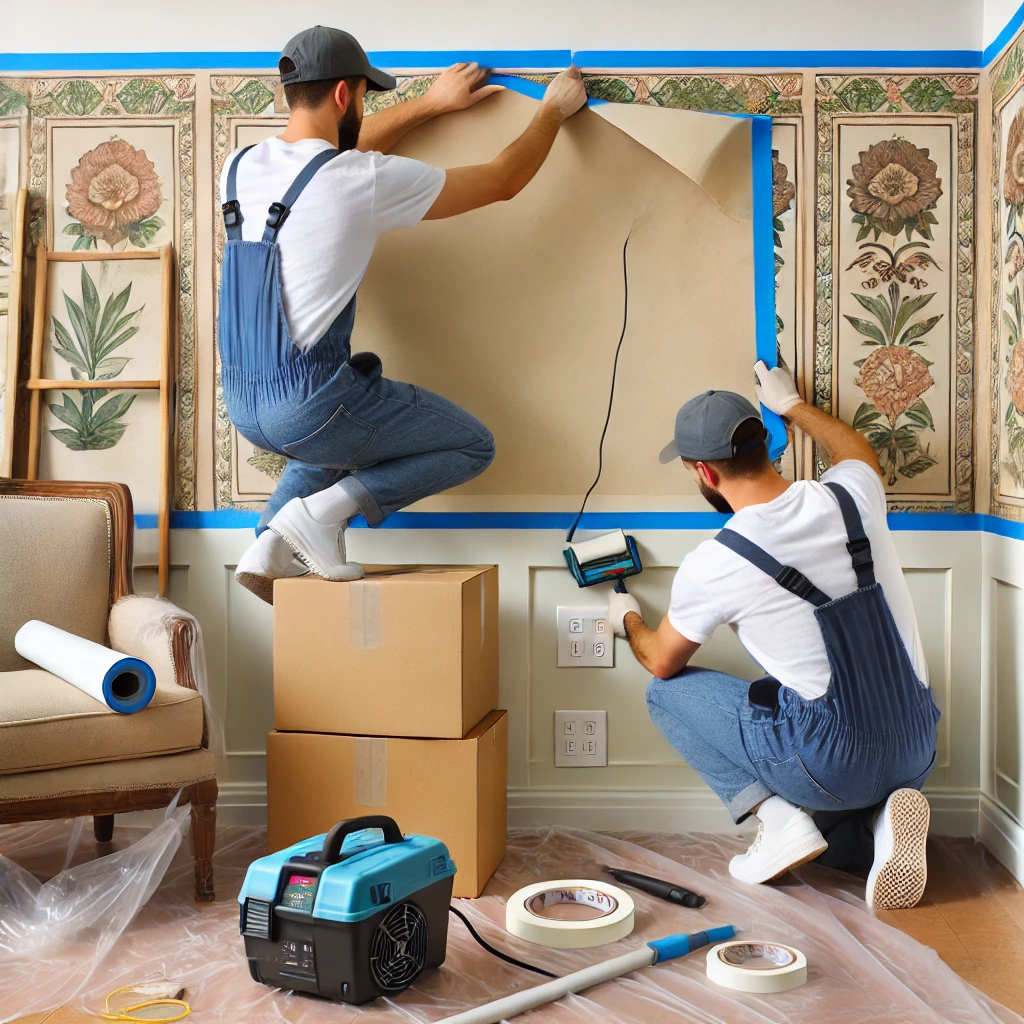Removing old wallpaper can seem like a daunting task, but with the right tools, techniques, and a bit of patience, you can strip it away without damaging your walls. This guide will walk you through the process step-by-step, ensuring a smooth and damage-free removal experience.
Step 1: Gather the Right Tools
Before you begin, make sure you have the following tools:
- Wallpaper scraper or putty knife
- Wallpaper scoring tool
- Sponge or cloth
- Spray bottle filled with warm water or wallpaper remover solution
- Drop cloth or plastic sheeting
- Painter’s tape
- Bucket for cleaning solution
Step 2: Prepare the Room
- Clear the Area: Move furniture away from walls and cover the floor with a drop cloth or plastic sheeting.
- Turn Off Power: Switch off the power supply and remove outlet covers to prevent electrical hazards.
- Protect Surfaces: Use painter’s tape to protect trim, baseboards, and moldings.
Step 3: Test a Small Area
- Find a corner or seam on the wallpaper.
- Use a putty knife to lift the edge gently.
- Pull back slowly.
- If it peels easily: You may have a peel-and-stick wallpaper, making removal simpler.
- If it sticks stubbornly: proceed with the steps below for more complex wallpaper removal.
Step 4: Score the Wallpaper
- Use a wallpaper scoring tool to make small holes in the wallpaper surface.
- This allows water or remover solution to penetrate the adhesive underneath.
- Be gentle to avoid damaging the wall behind the paper.
Step 5: Apply Wallpaper Remover Solution
- Fill a spray bottle with warm water or a wallpaper remover solution.
- Spray the wall generously, focusing on the scored areas.
- Let the solution soak in for 10-15 minutes to loosen the adhesive.
Step 6: Scrape Off the Wallpaper
- Use a wallpaper scraper or putty knife to remove the softened wallpaper.
- Start from a seam or scored area, working in sections.
- Scrape gently at a low angle to avoid gouging the wall.
Step 7: Clean the Walls
- Use a sponge, warm water, and mild detergent to wipe away adhesive residue.
- Rinse the walls with clean water to remove any soap.
- Let the walls dry thoroughly before applying new wallpaper or paint.
Pro Tips for Success
- Work in Sections: Tackle one wall at a time to stay organized.
- Avoid Over-Saturating: Too much water can damage drywall.
- Be Patient: Allow enough soaking time for tough adhesives.
- Use a Steamer: For stubborn wallpaper, consider renting a wallpaper steamer for easier removal.
What to Avoid
- Rushing the Process: Impatience can cause wall damage.
- Skipping the Test Patch: Always test a small area first.
- Ignoring Cleanup: Adhesive residue can affect future paint or wallpaper applications.
Final Thoughts
Removing old wallpaper doesn’t have to be intimidating. By following these simple, damage-free techniques, you can transform your walls and get them ready for a fresh new look. Remember, the key is preparation, patience, and using the right tools. Testing a small area first and working in sections will help you achieve a clean and smooth surface.
Once your walls are clean and dry, consider upgrading your space with the best peel-and-stick wallpaper. This modern option is easy to install, removable, and damage-free—perfect for renters and DIY enthusiasts. With hundreds of patterns, textures, and colors available, peel-and-stick wallpaper allows you to refresh your space effortlessly.






Comments
Post a Comment